Perhaps our climate is not the best for open-top motoring but in other places in the world, conditions are perfect for driving around with the top down and there’s enough demand for convertibles that manufacturers still offer them. The Ferrari 296 GTS is the latest convertible to join the list, offering those who want a topless version of Ferrari’s mid-rear-engined PHEV a factory-built model.
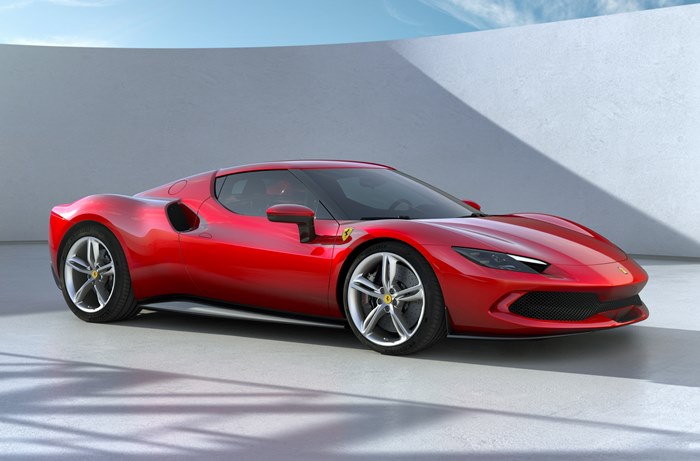
As explained before with the report on the 296 GTB, the engine is a new V6 unit and the first 6-cylinder engine installed on a road-going spider from Ferrari. While it’s not Ferrari’s first V6 (the first one was in the 1957 Dino 156 F2), it does usher in a new V6 era for the company. Total system output from the 2992 cc turbocharged engine is 830 ps/740 Nm, of which 165 ps comes from the electric motor.
This is the first ever Ferrari spider with a rear-wheel drive-only PHEV architecture in which the engine is integrated with a rear-mounted electric motor. This is derived from Ferrari Formula 1 racing cars and communication between the motor and engine is via the Transition Manager Actuator which allows them to run together efficiently and optimally.
Although the 296 GTS is about 70 kgs more than the 296 GTB, the performance claims are pretty much the same – 0 to 100 km/h in 2.9 seconds and a top speed of 330 km/h, while the range from the 7.45 kwh battery is said to be good for 25 kms running on electricity alone.
As with the SF90 Stradale, customers who require more extreme power and performance, especially if they are going to be on the track, can take the Assetto Fiorano package which includes lightweight features and aero modifications.
From a chassis perspective, at 2600 mm, the wheelbase is 50 mm shorter than previous Ferrari mid-rear-engined berlinettas to the benefit of the car’s dynamic agility. The 296 GTB’s chassis was redesigned and optimised for the 296 GTS to improve torsional rigidity and bending stiffness compared to previous spider applications. This was achieved to the tune of 50% in the case of the former and 8% in the case of the latter.
The styling of the 296 GTS has kept the clean and sophisticated lines of the 296 GTB. There was, of course, a clear focus on minimising the impact of any modifications on the exterior bodywork, always a challenge for a convertible variant. With the RHT stowed, the sleek silhouette remains very similar to that of the 296 GTB.
The need to stow the RHT (Retractable Hard Top) inside the engine compartment required the creation of a new tonneau cover design. While on the 296 GTB, the engine bay is completely horizontal and dominated by two flying buttresses in a nod to the 250 Le Mans, the 296 GTS’s tail is absolutely unique.
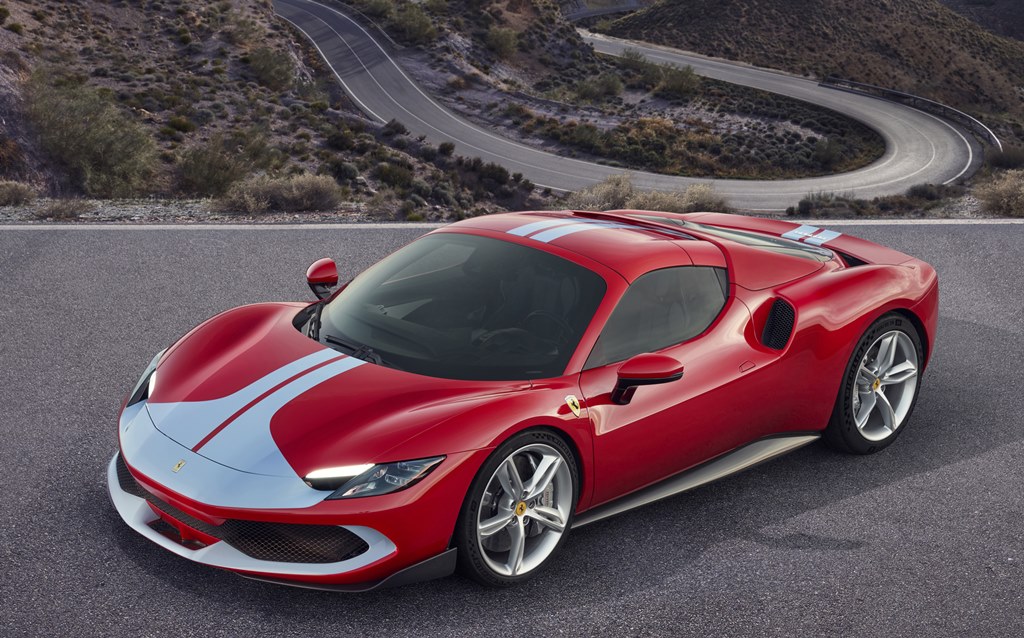
As is the case with the 296 GTB, a dominant feature of the car’s architecture is the signature ‘aero bridge’. The overall effect is of an extremely compact cabin effortlessly integrated with the wings and flanks. The buttress theme is further enhanced by contrasting sculpted extensions that frame the engine cover screen and integrate the novel fuel filler and battery charge covers, avoiding architectural disharmony.
The lightweight RHT takes 14 seconds to retract or deploy at speeds of up to 45km/h. The separation line between the car’s body and the roof is above the B post. As a result, the folding roof splits into two sections that fold flush over the front of the engine, thus maintaining the engine bay’s thermal dissipation characteristics and the balance of the overall design. This also allowed the designers to introduce a window in the rear section of the engine cover through which the new V6 is clearly visible.
The 296 GTS has several radical and innovative solutions with regard to aerodynamics which have turned the active aero paradigm, introduced from the 458 Speciale onwards, on its head. The car has an active device used not to manage drag but to generate extra downforce. The LaFerrari-inspired active spoiler integrated into the rear bumper allows the 296 GTS to generate a high level of rear downforce when required (up to 360 kgs at 250 km/h with the Assetto Fiorano package).
The aero development work done on the 296 GTS means that even in low-drag configuration the car can deliver more downforce than previous applications. In high-downforce configuration, there is an additional 100 kgs in downforce, thanks to the active spoiler.
The rear diffuser has a very clean, linear design with a central channel that makes it possible to modify the direction in which the airflow sucked along the underbody is released into the car’s wake. This contains the vertical expansion of the car’s wake and thus drag.
Turbulence in the cockpit area is something which convertibles cannot escape but thanks to modern solutions, this can be effectively reduced to make things comfortable for the occupants. For the 296 GTS, the geometry of the trim behind the headrests is optimised to channel as much of the air as possible towards the tonneau cover to reduce the amount of flow recirculating inside the cabin. Aerodynamic flaps have been integrated into the rear trim structure to reduce buffeting and increase comfort in open-top driving.
As with the 296 GTB, the 296 GTS’s cockpit was developed around the new concept of an entirely digital interface. From a formal perspective, when the engine is off, the onboard instruments go black for a minimalist look. Exclusive Italian leather trim to the seats and trim is further enhanced by the noble technical materials used on the functional components.
Ferrari has not announced how much the 296 GTS will cost, but it would certainly cost more than the 296 GTB which, in Malaysia, is priced from RM1.228 million.
Naza Italia introduces Ferrari 296 GTB PHEV, priced from RM1,228,000
With the overturning of the acquittal of Sam Ke Ting in the ‘basikal lajak’ case in Johor, it seems that young children may now believe that they are protected by the law even if their action of dangerous and irresponsible. They now feel emboldened to play on roads and not only inconvenience other road-users but also put themselves and others in danger.
This 19-second video posted by Facebook user Che Kumar recently shows a group of children along a narrow road said to be in the Taman Anggerik area in Cheras, Kuala Lumpur. The video shows them purposely lying on the roadside as a car approaches, and because the area is not well lit, the driver might only see them at the last moment.
They take positions lying down right next to the path of the car and just after it passes, one boy rolls across the road, perhaps to give the impression that he had been hit. Had the driver been shocked or confused by such a strange situation, he or she might have lost control of the car in panic and then an accident would have occurred.
Source: FB Che Kumar
Hopefully, the police (who are quick to notice videos on social media) will take action before someone does get hurt and an innocent motorist might be jailed even though he may not be aware that such ‘games’ are played in the area at night.
Still considered guilty even after two acquittals in ‘basikal lajak’ case?
While driving from Singapore up through Peninsular Malaysia to the border with Thailand has been possible for decades, in the coming era of electric vehicles (EVs), a network of recharging stations needs to be set up so that such vehicles can complete the whole 862-km journey without running out of electrical ‘fuel’. While the range of EVs continues to increase, places to recharge along the way will still be needed in the same way as petrol stations as travellers may detour or take breaks in various places.
Companies like Shell, in collaboration with Porsche Asia Pacific, have taken the initiative to start setting up a network of high-speed charging stations along the North-South Expressway. No doubt, as the EV population increases, other companies will also start contributing to the network.
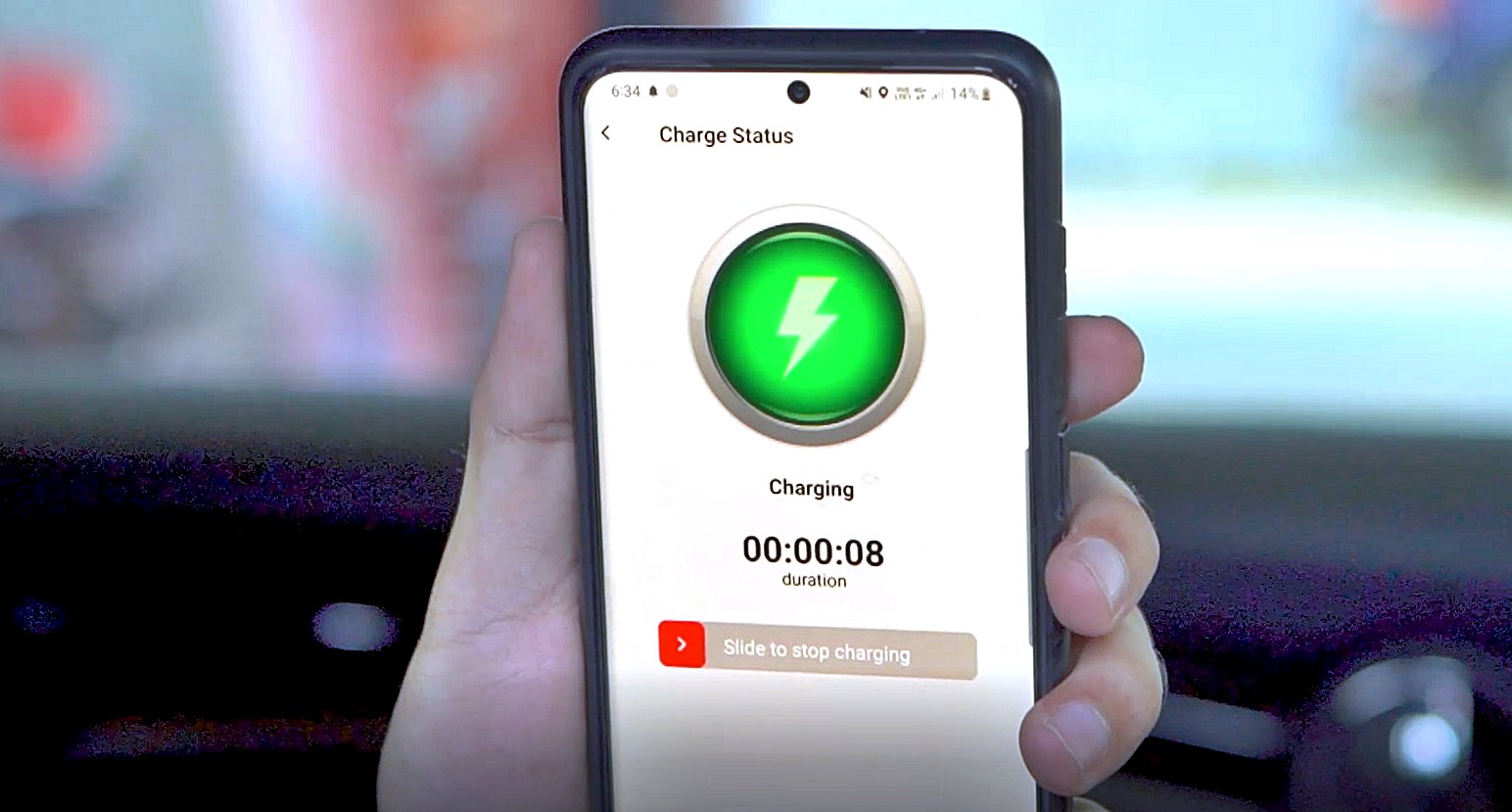
Singapore’s sole piped town gas provider, City Energy, is among them and has launched its Go by City Energy (Go) EV charging service to offer a seamless operational service across Singapore and Malaysia using a mobile app on smartphones. Operated by its new subsidiary, City Energy Go Pte. Ltd., Go will be the first EV charging service provider to offer EV charging solution as a service
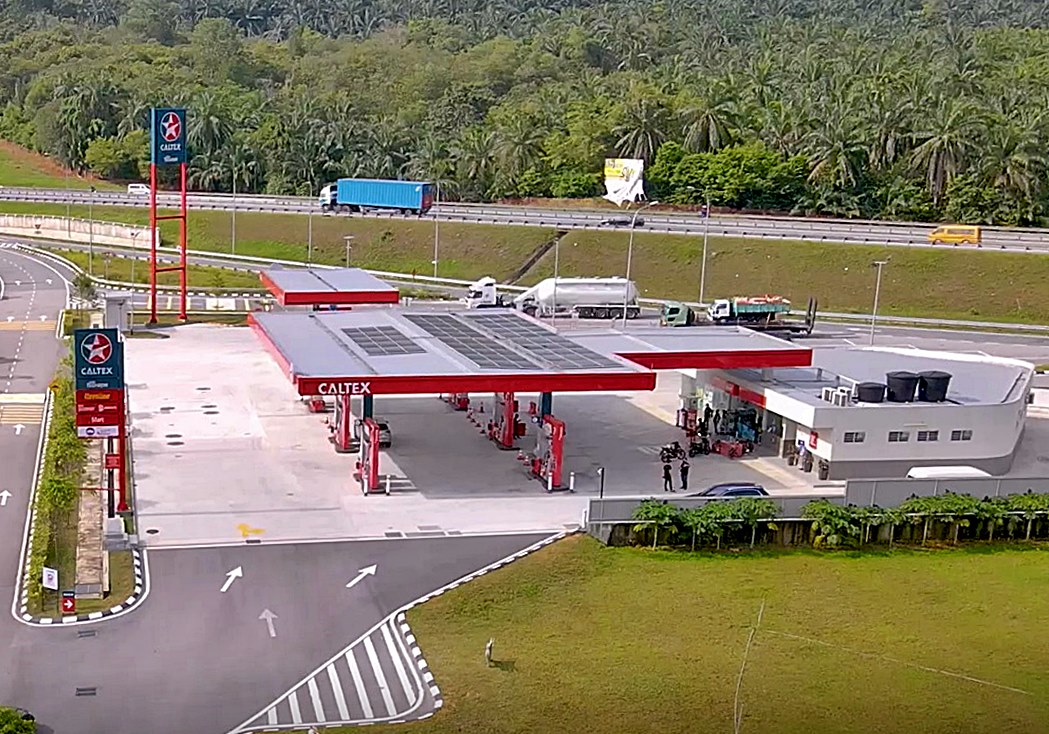
Go, which finances, operates and maintains the network of EV charging stations, has a strategic partnership with EV Connection Sdn. Bhd. to extend charging connectivity into Malaysia. The two companies recently signed an agreement to extend connectivity into Malaysia. Go will be the first service in Singapore that extends EV charging capabilities into Malaysia.
EV Connection is one of Malaysia’s pioneers in EV charging solutions and an authorised EV charging station distributor registered with Suruhanjaya Tenaga, CIDB, Tenaga Nasional Berhad and MyHijau. With this partnership, Go drivers will be able to access EV Connection’s network of charging stations in Malaysia.
Depending on the location, the charging stations and power levels may vary. Go says that the charging levels can be 22 kW or 43 kW (AC) or 50 kW (DC). The higher the charging level, the faster the charging will be but each EV will be designed to accept a specific charging level. To cater for different EV models, the charging stations will have different ports for the popular types of charging cable connectors.
The third of Audi’s ‘sphere’ concept cars showing its idea of premium electric vehicles in future in three different segments has been unveiled today: the Audi urbansphere. Where the 2021 skysphere was a roadster GT concept and the grandsphere that followed was a luxury sedan, the urbansphere takes the form of an MPV.
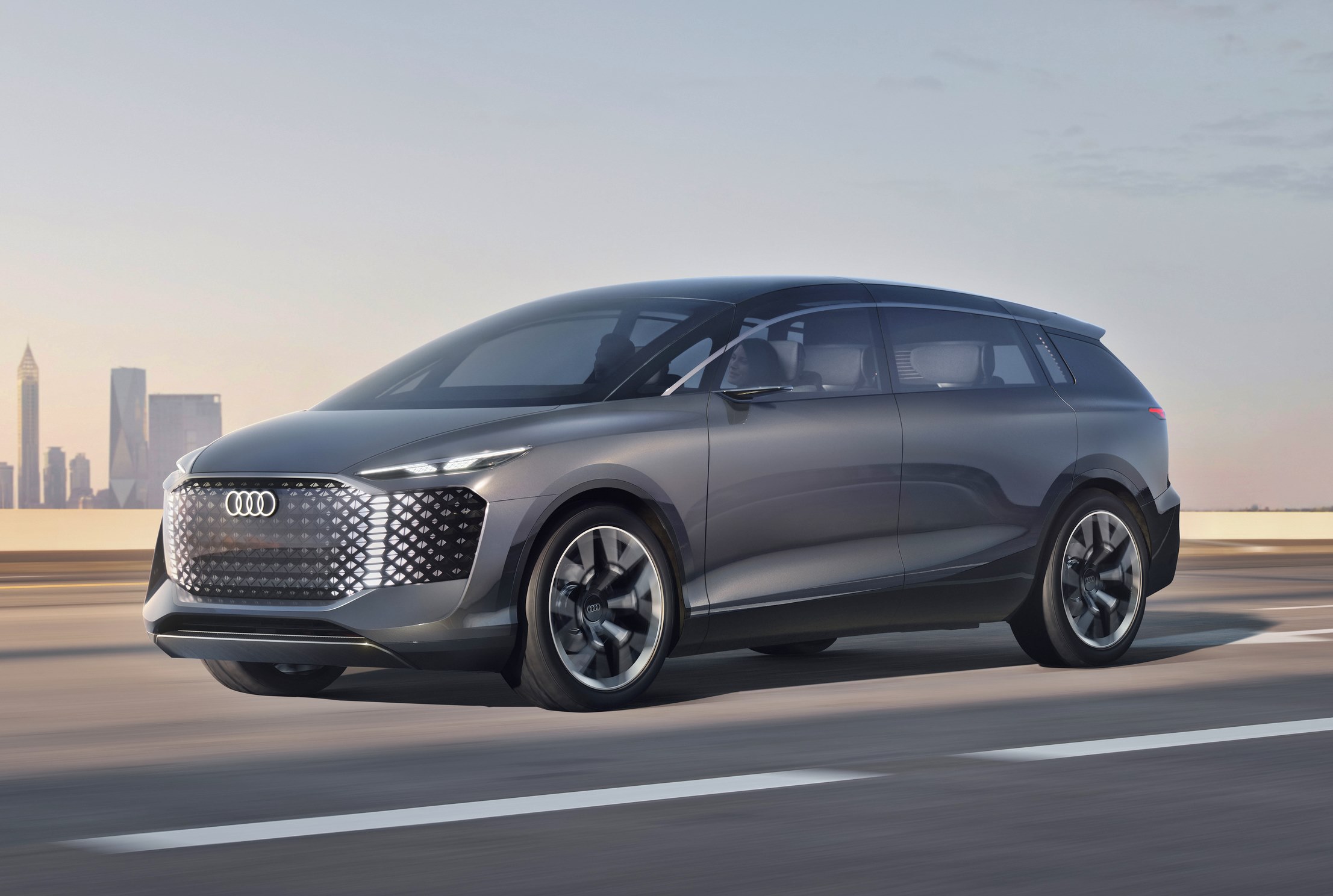
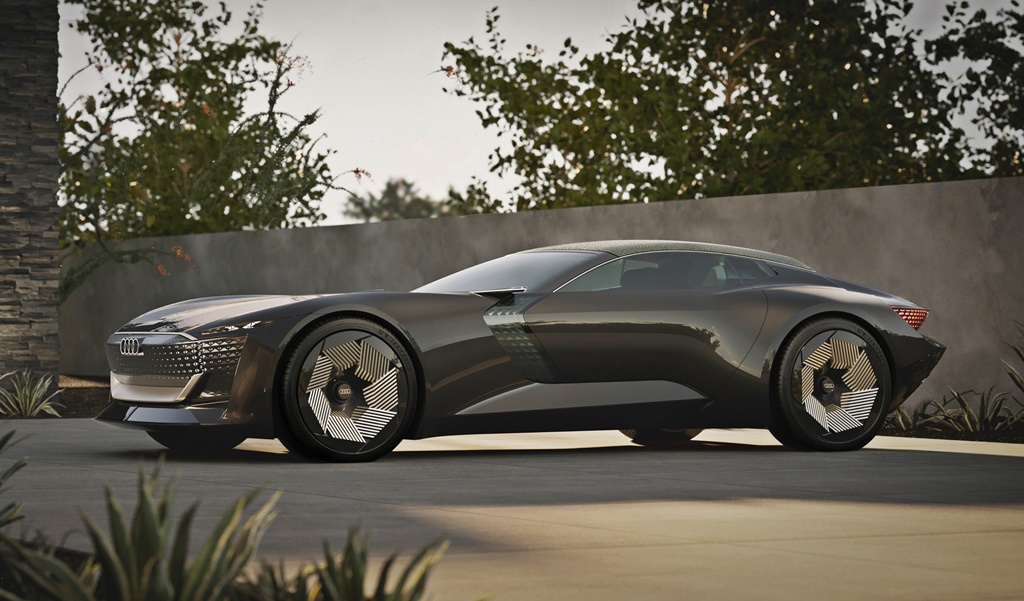
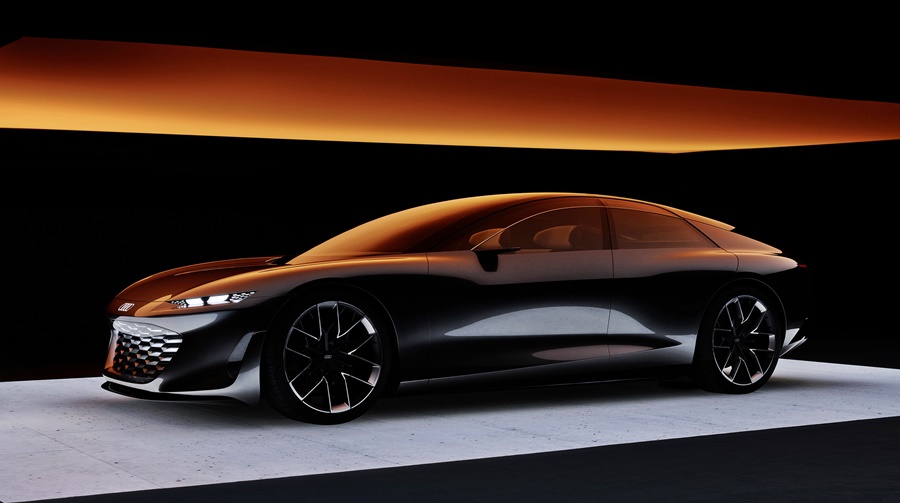
‘Co-created’ with Chinese customers
Designed by teams in China and Germany, the urbansphere has been conceived with Chinese customers involvement as well. For the first time, potential customers in China could also take part in the development process, contributing their own perspectives as part of a process known as ‘co-creation’. “In order to meet the demands of our Chinese customers, Audi’s design studios in Beijing and Ingolstadt worked together closely to jointly develop the Audi urbansphere concept car,” said Markus Duesmann, Chairman of the Audi Board of Management and responsible for the Chinese market.
It is the largest model in the sphere family and even of all Audi concept cars to date, measuring 5510 mm in length, 2010 mm in width and 1780 mm tall. The silhouette of the body features traditional Audi shapes and elements, combined to create a new composition featuring the signature Singleframe. The implied wedge shape of the vehicle body is emphasized by the large, flat windscreen.
At the front, the Audi Singleframe is shaped like a large octagon. Even though the grille has lost its original function as an air intake because this is an electric vehicle, it still remains prominent as an unmistakable signature of the brand. The digital light surface lies behind a slightly tinted, transparent visor that covers a large area of the front.
The 3-dimensional light structure itself is arranged in dynamically condensed pixel areas. The upper and lower edges of the Singleframe are still made of aluminium and the vertical connections are formed by LEDs as part of the light surface. The lighting units to the right and left of the Singleframe look narrow, like focused eyes.
These digital lighting units, known as ‘Audi Eyes’, echo the brand’s four rings as they enlarge and isolate the intersection of two rings to form a pupil – a new, unmistakable digital light signature. The illuminated surfaces – and therefore the expression of the ‘eyes’ – can be adapted to the traffic situation, environment, or even the mood of the passengers. As a daytime running light, the gaze can be focused or open, and the ‘iris’ can be narrow or wide. A digitally created ‘eyebrow’ also functions as a dynamic turn signal when required.
MPV of the future?
Though it may be considered an MPV by today’s definition, Audi feels that the urbansphere defies classification into conventional vehicle categories. The monolithic design shares commonalities with the other two concept cars, as do the sculpted, soft shape of the wheelarches. Despite the stately proportions, elegance, dynamism, and an organic design language should come to mind.
‘Third living space’
The 3.4-metre long wheelbase allows a spacious interior designed as a lounge on wheels, serving as a third living space during the time spent on the roads of densely populated cities like Beijing. It can also have a role as a mobile office in which occupants can have meetings or work while moving around. Four individual seats in two rows offer first-class comfort and the seating can also cater to passengers’ changing social needs in a variety of ways.
The interior of the urbansphere is not subject to the dimensional constraints nor limited by the physics of driving. The interior designers had what is the largest interior space in an Audi vehicle to date to prioritize occupant comfort. To this end, it can be a mobile interactive space that provides a gateway to a wider digital ecosystem.
“To make e-mobility even more attractive, we think about it holistically and from the customer’s needs,” said Duesmann. “More than ever before, it is not just the product that is decisive, but the entire ecosystem. That is why Audi is creating a comprehensive ecosystem with services for the entire car. The Audi urbansphere concept offers everyone onboard a wide range of options to use that freedom to provide a highly-personalized in-car experience: communication or relaxation, work or withdrawal into a private sphere as desired. As such, it transforms from being strictly an automobile into an ‘experience device’.“
Customized infotainment offerings are available, such as the seamless integration of onboard music and video streaming services. There is a large-format and transparent OLED screen that pivots vertically from the roof area into the zone between the rows of seats. Using this ‘cinema screen’, which occupies the entire width of the interior, the two passengers in the back row can take part in a video conference together or watch a movie.
Wellness zone, suggested by Chinese customers
The urbansphere also qualifies as a wellness zone, thanks to digital options that emerged in no small part through input from the co-creation process with Chinese customers. Stress detection is a prime example – this adaptive program uses facial scans and voice analysis to determine how passengers are feeling and offers personalized suggestions for relaxation, for example with a meditation app that can be used via the personal screen and the private sound zone in the headrests.
Many of the materials in the interior, such as the hornbeam veneers, come from sustainable sources. This choice of material makes it possible to use wood that has grown close to the site, and the entire trunk can be utilized. No chemicals are used during the manufacturing process.
Audi Light Umbrella
As a special tribute to China, the designers provide a luminous accessory that passengers can take with them when they leave the urbansphere – the Audi Light Umbrella. This self-illuminating umbrella inspired by traditional Chinese umbrellas acts as a protective companion and multifunctional light source. The inner skin is made of reflective material, so the entire surface acts as a glare-free lighting unit.
Because the urbansphere has level 4 autonomous technology which frees its occupants of the need to be directly involved in its operation, it can pick up passengers at their home or office and independently takes care of finding a parking space and charging the battery.
Premium Platform Electric
The urbansphere is a concept and design study so much of what it shows are proposals for the future. However, the Premium Platform Electric or PPE is something that is already in use by Audi and Porsche. It has been specifically designed for battery-electric drive systems and the is a battery module between the axles. Audi has succeeded in achieving a flat layout for the battery module by using almost the entire base of the vehicle between the axles.
The battery module can store around 120 kWh of energy to power 2 electric motors capable of delivering a total system output of 295 kW/690 Nm. There is one electric motor on each of the front and rear axles which, by means of electronic coordination, implements the permanently available all-wheel drive as required. The motor on the front axle can be deactivated as required in order to reduce friction and thus energy consumption when coasting.
The powertrain has 800V charging technology which will make it possible for recharging with up to 270 kW at fast-charging stations in the shortest possible time. This will enable charging times to approach those of a conventional stop to refuel a car powered by a combustion engine. Just 10 minutes would be enough to charge the battery to a level sufficient to cover more than 300 kms. Audi expects that a fully charge battery module would be able to provide a range of up to 750 kms, even when used for more energy-intensive city and short-distance trips.
“These concept vehicles embody our brand strategy. They show how we imagine the near future of premium mobility,” said Henrik Wenders, Senior Vice-President of the Audi brand. For him, the future is a design space to offer people new experiences in ‘spheres’ during their journey.
Audi Charging Hub concept could be refuelling station of the future
Over the next 10 years, Honda will allocate approximately 5 trillion yen in the area of electrification and software technologies to further accelerate its electrification, which is approximately 62% of the company’s overall R&D expenses budgeted for the same. This expenditure will enable it to have up to 30 EV models globally by 2030 with production volumes of more than 2 million units annually. This huge investment will help Honda achieve carbon neutrality for all products and corporate activities by 2050.
The strong focus on EVs – and presumably, Honda is referring to battery electric vehicles (BEVs) – may suggest that the carmaker will be decreasing development of internal combustion engines (ICE) and hybrid vehicles (HEVs). In fact, last year, it announced the intention to stop producing and selling new ICE vehicles, including hybrids, worldwide by 2040.
However, like what a number of major carmakers are saying, hurried adoption of BEVs is not a practical approach. Due to regional differences such as the level of customer acceptance, affordability, readiness of infrastructure and economic conditions, a singular approach to switching to BEVs globally is not going to work.
Honda will therefore be working on rapid transitioning to BEVs in markets and regions such as the USA, Europe, China and Japan while continuing with a more realistic solution for other areas. In those major markets for electrification, the ratio of BEVs and fuel cell electric vehicles (FCEVs) will be increased at a faster rate. In relation to overall unit sales, these zero emission vehicles will account for 40% of volume by 2030, 80% by 2035, and 100% by 2040.
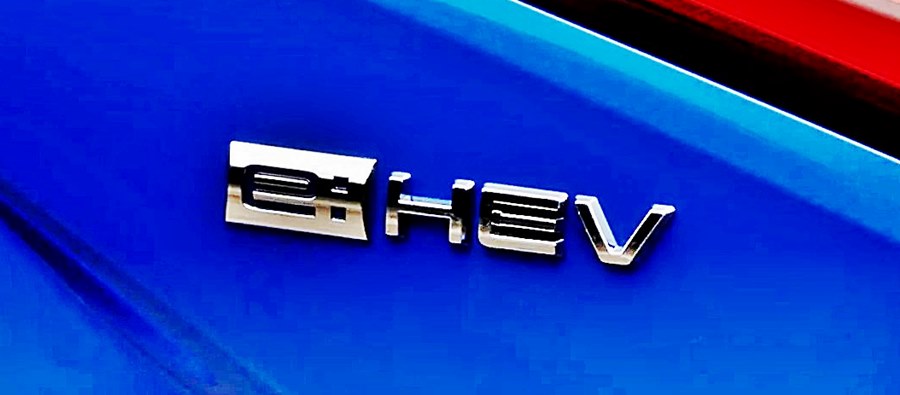
And even though North America is one of the regions that is part of the main electrification plan, Honda has still allocated R&D resources to develop new hybrid models for the near-term. This is to increase HEV volume of core models such as the CR-V, Accord and Civic which are produced there. Honda currently sells 4 HEV models in North America. However, Insight production will end in June to start production of the new CR-V Hybrid this year, followed by the Accord Hybrid, which will eventually make up 50% of the sales mix of each model.
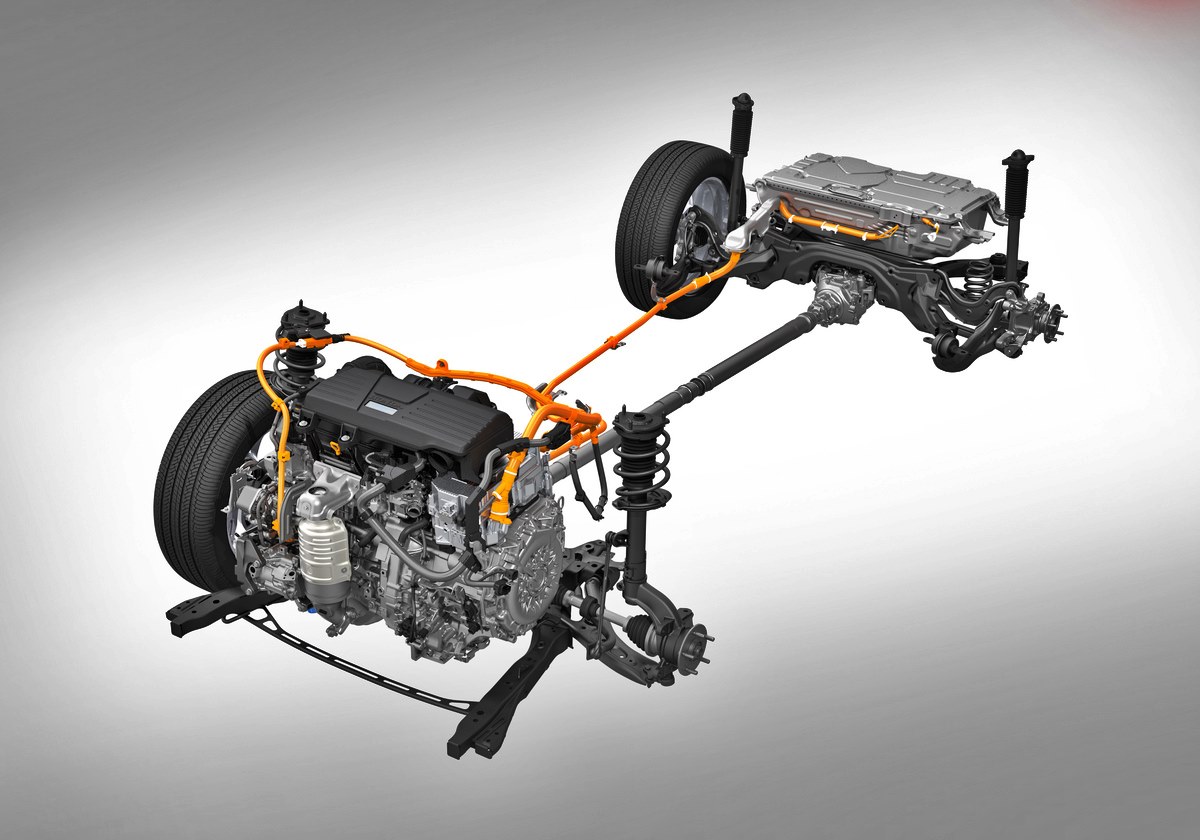
“We need to take into account multiple factors, such as the living environment and the penetration rate of renewable energy, rather than simply switching to electric vehicles,” said Toshihiro Mibe, Honda’s CEO. “We are ending conventional engines but we will still focus on hybrids, and it will be our strength in 2030 or even in 2035.”
Honda, along with Toyota, were the first brands to introduce HEVs and while the Prius was the first into the market, Honda’s first generation of Insight arrived in the USA 7 months before the Toyota HEV. Following the futuristic looking Insight was the Civic Hybrid in 2002 and then the Accord Hybrid.
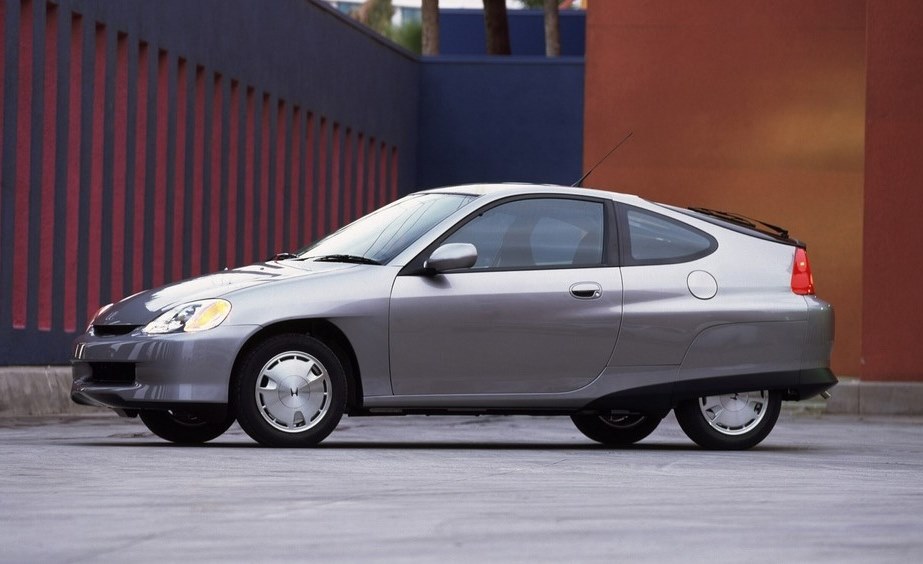
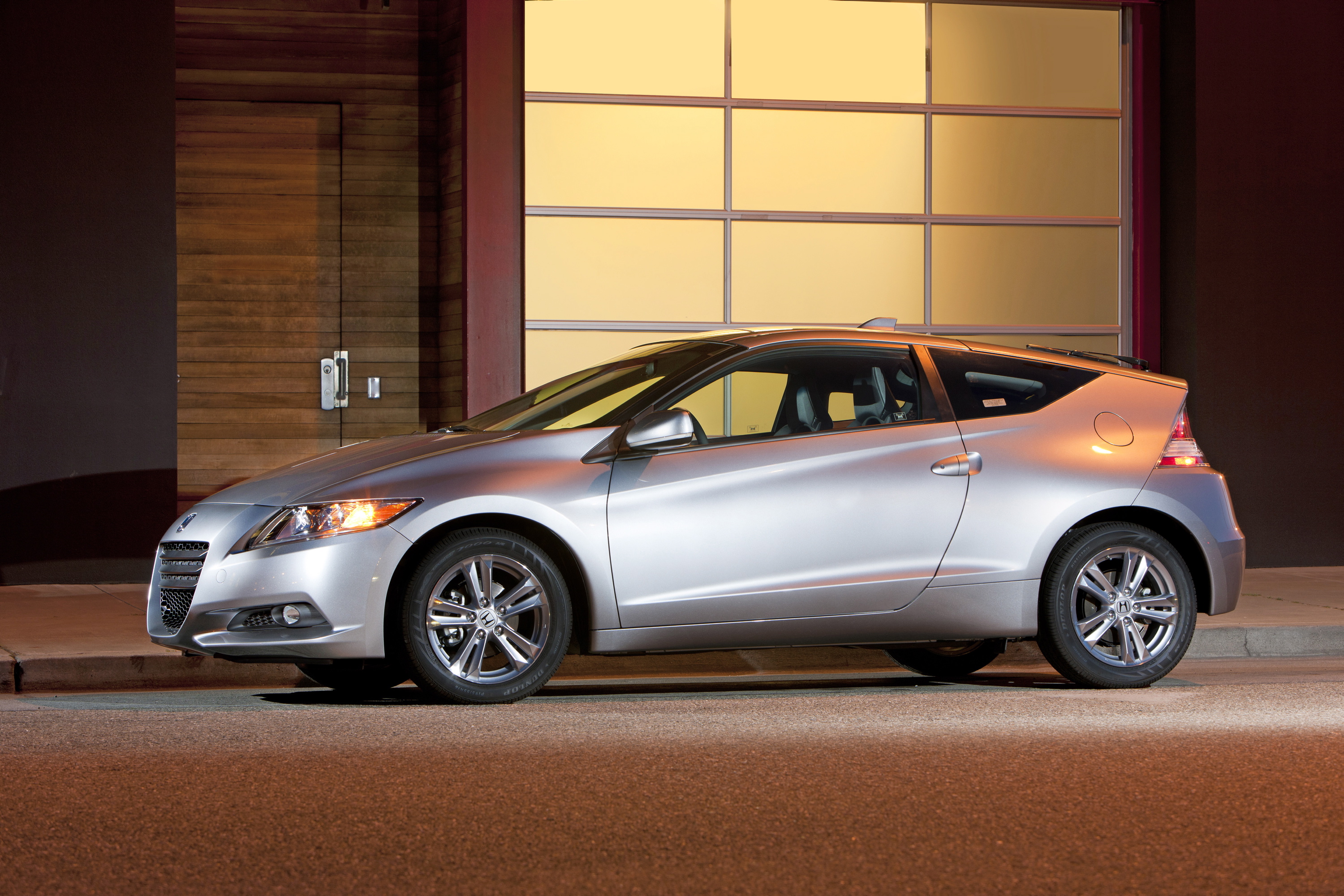
Honda continued to improve its hybrid technology (which it also refers to as e:HEV technology in some markets) as well as try to bring costs down and developed better hybrid powertrains for the next generations of the models. It also came out with a HEV sportscar, the CR-Z, in 2010 but as sales of coupes slowed down, the model line did not continue into a second generation.
So HEVs still have a future, more so now that they have moved from being of interest to early adopters to become more mainstream in the marketplace. While most HEV buyers would be aware that their car is powered by a petrol engine as well as an electric motor, the fact that a HEV needs no recharging (a plug-in hybrid or PHEV does) makes the technology ‘invisible’. It’s like turbochargers; in the 1970s, they were distinct features in high-performance engines but today, their presence is taken for granted in the new generation of downsized engines.
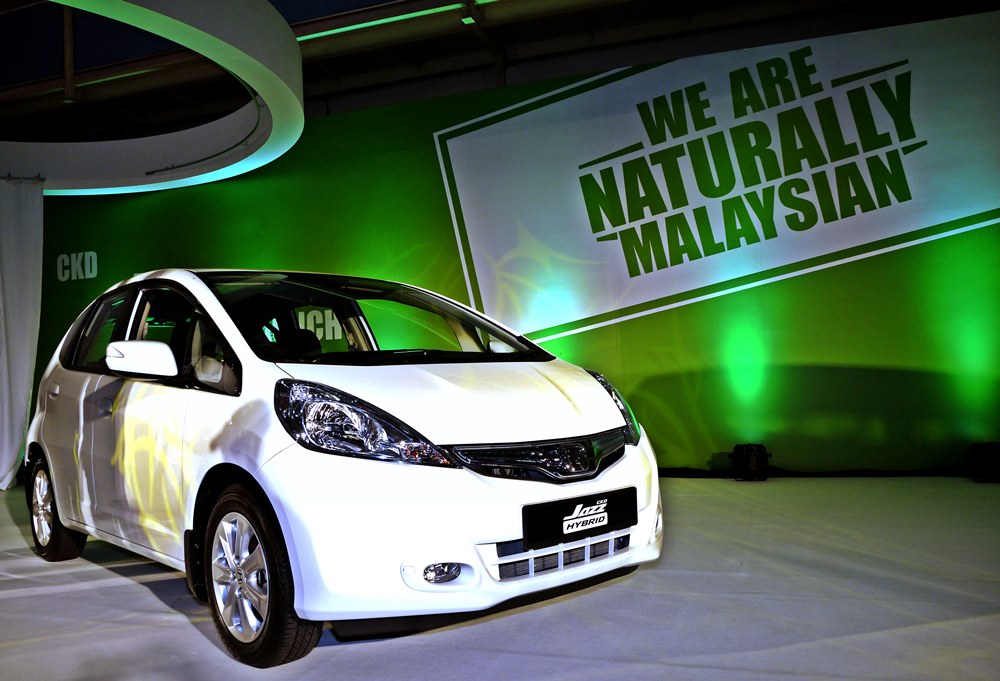
Honda’s continued attention to HEVs will also be beneficial in other markets where BEV adoption may be slow. HEVs can still help in a small way on the climate change issue as they generate lower carbon dioxide gases which have been identified as a major cause of global warming.
Honda Civic Hatchback e:HEV Hybrid for Europe – will it come to Malaysia too?
America has always had an attractive car market which was once the largest in the world. Though overtaken by China in 2009, the US market is still huge and has averaged 17 million units annually over the past few years. Many brands are present in the market and competition is tough, besides the fact that emission and safety regulations are also stringent.
Nevertheless, Vietnam’s Vinfast intends to enter the market and its ambitious plans are not only to sell SUVs there but also make them in the country. After looking at incentives offered by various states, it settled on North Carolina to build its factory with an initial investment of US$2 billion. It is the state’s first vehicle manufacturing plant and the largest economic development announcement in North Carolina’s history. VinFast’s project is estimated to grow the state’s economy by at least US$71.59 billion over the next 32 years,
The factory, on an 800-hectare site, will have an annual capacity of 150,000 vehicles and start rolling them out from the second half of 2024. Besides SUVs, the factory will also make EV battery packs and electric buses.
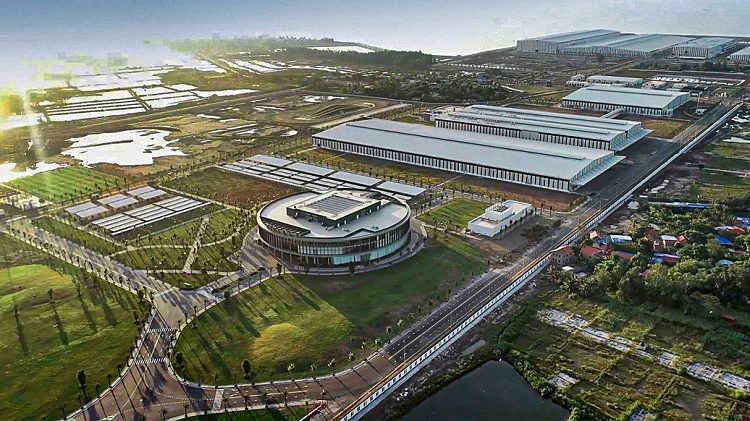
“Having a production facility right in the market will help VinFast to proactively manage its supply chain, maintain stabilized prices and shorten product supply time, making VinFast’s EVs more accessible to customers, contributing to the realization of local environmental improvement goals,” said Le Thi Thu Thuy, VinFast Global CEO and Vice Chair of the Vingroup. The Vingroup was founded by Pham Nhat Vuong, Vietnam’s first billionaire and its richest person.
The US factory will be Vinfast’s third production site following the first one in Haiphong, Vietnam. It also acquired a GM factory in Hanoi as well as GM’s proving grounds in Australia. However, it decided to later sell off the proving grounds.
For its US business, Vinfast plans to spend $200+ million for a headquarters in Los Angeles and set up a network of more than 60 outlets with aftersales centres this year.
The 5-year old carmaker currently has 2 fully electric SUVs, the VF8 and VF9 (previously known as VF e35 and VF e36), which were styled by Pininfarina. The smaller VF8 has 2-wheel drive and all-wheel drive with one or two electric motors and a 90 kWh battery claimed to give 500 kms of range. The larger VF9 has three rows of seats and dual motors for all wheel drive. The battery pack has a capacity of 106 kWh which is claimed to be good for around 482 kms of cruising range.
Like other Asian brands that entered the US market, it’s a gamble that Vinfast is taking, especially as it is so new. However, its lack of reputation may also work as people will not have preconceived notions about the brand and may assume that being Asian, it will have the sort of quality and reliability for which Japanese products have long been known. Being ‘Made-in-America’ may also be helpful in gaining acceptance but ultimately, Vinfast will still have to fight for its place in the market against other established brands.
Design is an art form that goes back centuries, and it has been used for all kinds of things in our lives. In the auto industry, it is an important element at the start of a new model project where the first ideas are given form and then explored to become the shape of the vehicle. Designers have traditionally commenced the initial creative phase by creating pencil sketches on paper, reflecting a certain kind of vehicle.
Many initial sketches will be prepared and then evaluated and eventually, one or two promising ones will be identified. These will then be developed as scale models from clay, a process that can take anywhere between 4 weeks and 2 months. Afterwards, the scale model would then be scanned and milled in a full-size. However, this approach is not without its drawbacks as some lines might be altered in the process.
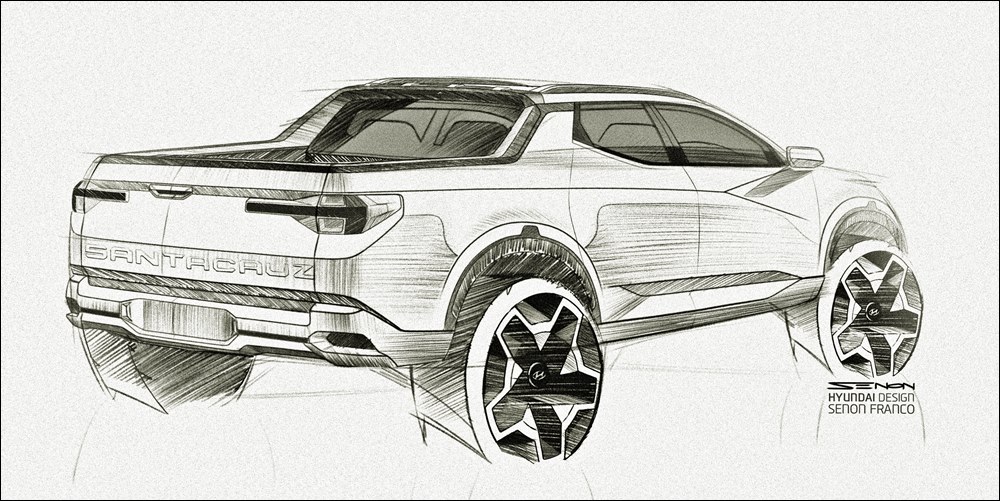
As in other car companies, Hyundai’s designers were required to work together with clay modellers to refine the final design of an upcoming model. However, lines and surfaces had to be marked out using tape. On top of this, the company’s engineers were unable to work simultaneously with the designers, as they could only receive data after scanning the model with a photogrammetry system. Both of these factors made the process very time-consuming and cost-intensive.
In recent years, the design approach at Hyundai has undergone something of a revolution. While sketching remains fundamental for the designers, they can also draw upon a range of advanced tools such as virtual reality (VR) and 3D gravity sketching. These tools create a streamlined digital process which speeds up vehicle development by stepping away from a traditional design approach.
The VR revolution
Today, Hyundai no longer produces scale clay models; instead, it utilizes technologically advanced tools that are more intuitive, such as 3D digital design software. These enable the company’s engineers to mill full-scale models using 3D data, which significantly speeds up the design process.
The software enables the designers to work in collaboration across multi-user and multi-location environments. They can create models and immersive environments in VR that look extremely close to the real thing. The difference between modern design and the traditional approach is stark, and can be compared to the revolution cars undertook before and after ABS appeared, as an example.
VR technology also opens up a host of new opportunities for the designers. For example, the gravity sketching tool enables designers to create more human-centric vehicle designs by working in 3D from the start. Designers swap their paper and pencils for a headset and controllers to become immersed in VR, imitating gestural interactions through motion tracking. By working in 3D, they can experiment with different proportions and build variations based on their ideas. Meanwhile, a 360-degree view of the vehicle allows them to sketch from any angle – in contrast to the traditional 2D process.
3D gravity sketching also enhances the collaboration between the exterior and interior designers. Through this technology, the two teams are able to work together simultaneously. While the exterior design team refines the digital model, the interior designers can work in parallel by virtually stepping inside the car to develop features or make quick adjustments.
Another advantage of this technology is the ability to test unlimited colour options and material applications, including fabrics and leather, ambient lighting and other types of materials. As well as saving time, this also reduces shipping and travelling costs. In addition, this approach is much more sustainable as significantly less waste is produced, resulting in a significant reduction of CO2 emissions.
The VR design evaluation system
Hyundai’s design journey in multi-user wireless VR spaces started in 2017. By 2019, Hyundai and Kia (which is part of the Hyundai Motor Group) had established an ambitious new VR design evaluation system which has now been fully implemented. The system demonstrates a heightened focus on enhancing vehicle development processes through the implementation of VR technology. It simulates many aspects relating to a model under development, including interior and exterior design elements, as well as lighting, colours and materials.
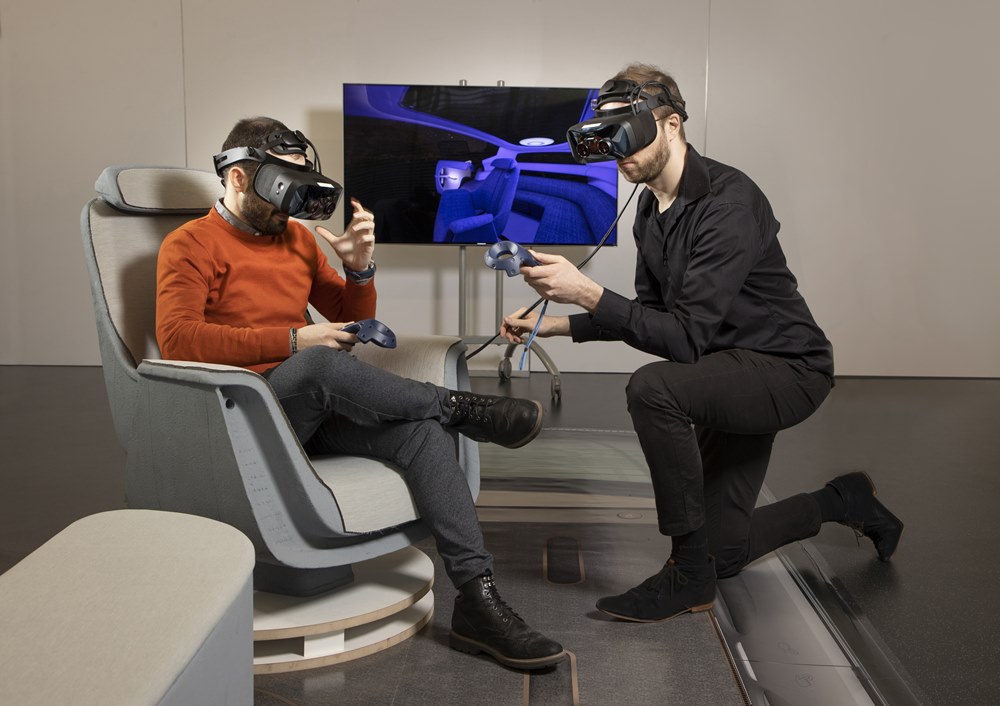
The advanced tools are used at the company’s R&D facilities in Korea, Germany and the USA, as well as design centres in Europe, India, China and Japan. They allow the designers to review a multitude of design concepts earlier in the developmental process, and in ways that were previously physically impossible. VR headsets allow team members from the Design and Engineering departments to enter into a virtual conference in real-time and simultaneously undertake vehicle design quality assessments and development verification processes, no matter where they are in the world.
Getting around the lockdowns
These changes were already underway before COVID-19 emerged and sent the world into lockdown in early 2020. According to Simon Loasby, Hyundai’s Head of Styling, the pandemic served as a catalyst for the carmaker’s global design workforce, accelerating the transition to digitalisation and agile working.
“When our studios across the world were keeping all the designers home, we were fortunate that we were already operating a very well-oiled machine in terms of remote virtual connection, where we could all connect across 3 different continents and 5 different locations into a virtual working space and walk around the cars,” he recalled.
This partly enabled the completion of the SEVEN concept car project (shown above) in time for the 2021 AutoMobility LA event. It is the first fully-digitally designed model of the group and benefited from this virtual process. “When we completed the digital design sign-off of the car, Luc Donckerwolke (Executive Vice President for Design and Chief Creative Officer of Hyundai Motor Group), SangYup Lee (Senior Vice President at HMC and Head of Hyundai Global Design Center) and I were all in completely different locations, while our European team were in the discussion, too. We were in the same virtual location looking at the model, and did a complete virtual sign-off of the whole car: both exterior and interior. Remarkably, I hadn’t seen the physical model at that point, which must be a world-first for a lead automotive designer!” said Loasby.
Loasby’s ‘James Bond suitcase’
To enable Loasby to connect from anywhere, he has a specially built portable device which he refers to as his ‘James Bond suitcase’. Shaped inconspicuously like a travel bag, it is equipped with a laptop, VR goggles, cables and handsets. He is able to take it anywhere and participate in virtual design reviews with colleagues from all around the world.
“I’m very fond the carry-on bag I call my ‘James Bond suitcase’, because it ensures I can connect to our virtual conferencing space and conduct design reviews from anywhere, at any time,” he revealed. “In fact, one of the craziest design reviews I did was at Incheon Airport [in Korea]. I was about to fly somewhere but I needed to check in on the progress of a development quickly. So I took the gear out, plugged it in and set up my virtual studio next to a Starbucks and conducted a review from the departure terminal!”
Technology with a sustainable future
VR technology is continuing to evolve and in the future, it will offer much higher levels of detail and operate at far quicker speeds. It is therefore set to play an increasingly prominent role for Hyundai’s designers and engineers. In addition, advances in AR and mixed reality will enable the company’s colleagues to interact with one another even more immersively.
However, one fundamental benefit that should not be overlooked is its positive environmental impact. A digital design process produces a much lower carbon footprint, as far fewer clay, paper and waste materials are used in the process. For the development of SEVEN concept, Hyundai produced just one clay model for verification at the end, rather than a multitude of scale clay models. By meeting in a virtual conference space, Hyundai’s designers are no longer required to frequently travel around the globe, expending thousands of air miles in the process.
With electric vehicles (EVs) constantly in the news these days, you will by now be familiar with the main selling points: zero emissions and lower maintenance costs. Apart from governmental pressures, the industry is doing its best to persuade motorists to switch from vehicles with internal combustion engines (ICE) to EVs as quickly as possible to build up the numbers and reach economies of scale that can bring production costs down.
Understanding that driving range and price are key factors in consumers’ minds when considering an EV, they are working hard on those factors which will require greater manufacturing innovation and efficiencies across the sector. But the angle of zero emissions from EVs being able to address climate change and preserve the environment is not applicable everywhere. In the more economically advanced countries, ‘saving the planet’ may be something people can also think about (and do something about) but for much of the world, saving themselves first is a higher priority than changing to a more expensive EV in place of their still-functioning ICE vehicle.
“The reality is that, despite EVs eliminating tailpipe emissions, they also produce a ‘long tailpipe’ of increased demand for electricity and energy-intensive materials,” notes a report by global technology company Hexagon. The report, based on original research conducted by Wards Intelligence, says that many of today’s EVs have been designed for short-term well-to-wheel benefits without considering their ‘whole-lifecycle’ environmental footprint.
For motorists, the perspective is only from tank (the fuel tank or battery pack) to wheel whereas a true examination of the benefits of EVs must consider the much bigger picture. While EVs can certainly give the benefits which we are being told about, the cost of making them and running them is a side of the story which consumers don’t ask or know about. But it is one which is generating debate and which suggests that EVs are not necessarily the best solution to addressing climate change.
Bigger picture than just well-to-wheel
An EV can certainly beat an ICE vehicle on emissions while in use but what about over its entire life-cycle – starting with making it and also the resources to give it power? While the ‘well-to-wheel’ analysis typically looks at all emissions related to fuel production, processing, distribution, and use when comparing EVs to ICE vehicles, it is also necessary to cover an even wider scope which includes manufacturing of EVs and end of life.
This is where things start to look different and while studies have found that the amount of carbon dioxide (CO2) in the production and distribution of ICE vehicles and EVs is not significantly different, the battery packs needed in EVs tip the scales.
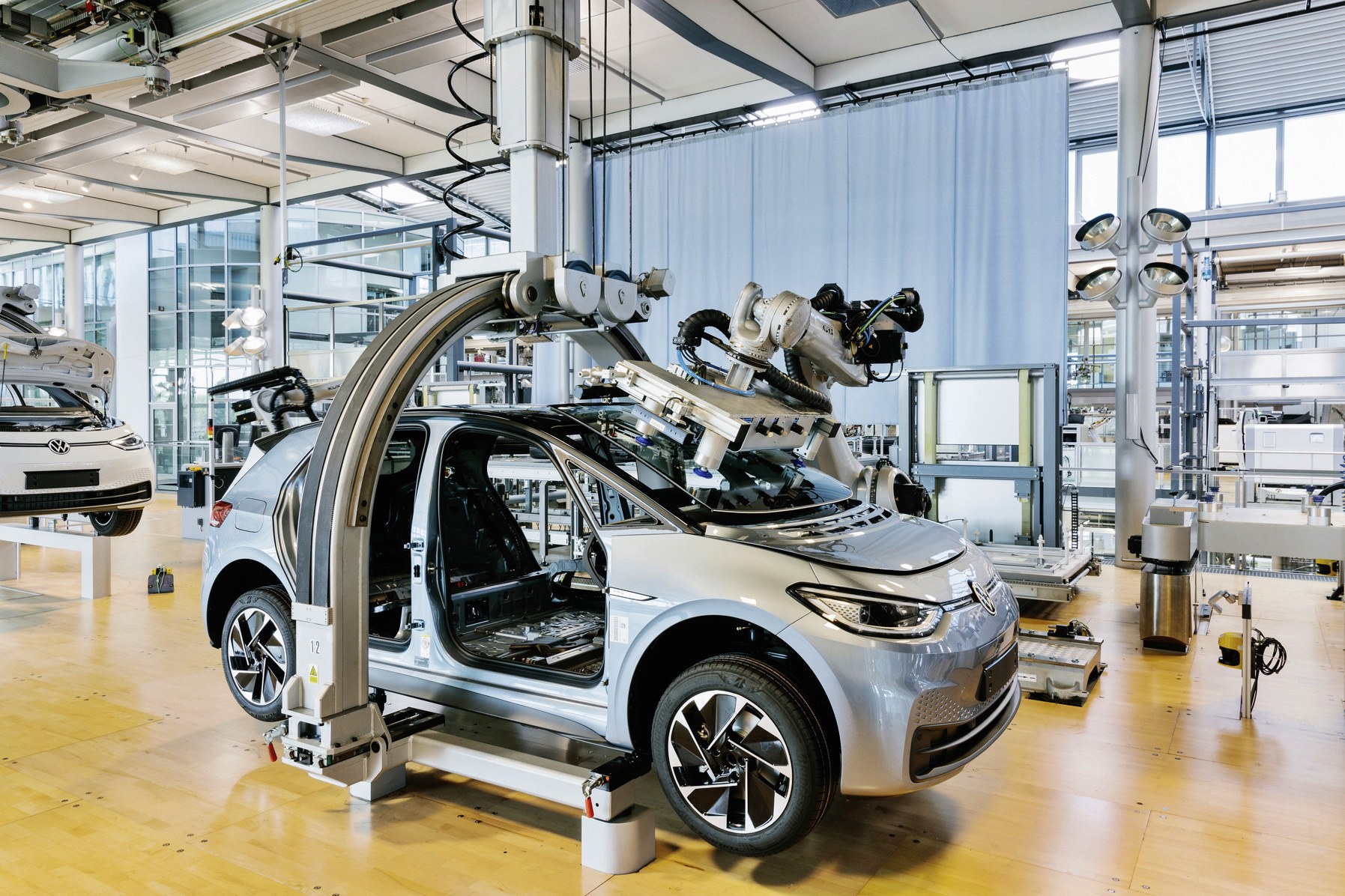
Apart from requiring depletable rare metals, it is estimated that up to 150 kgs of CO2 are released for every 1 kiloWatt hour (kWh) of battery capacity. To provide an EV with 500 kms of range would require a battery that currently has at least 60 kWh of storage capacity. To make such a battery pack would mean that another 9 tonnes of CO2 would be added to manufacturing the vehicle and this is a negative impact from the perspective of environment-friendliness (compared to making an ICE vehicle).
‘Sustainability’ is also touted as another selling point of EVs but if so many of the electricity-generating plants are coal-powered, would it not then be a case of shifting demand of one depleting fossil fuel (oil) to another (coal)? After all, both fuels are the product of dead plants and dinosaurs and other organic stuff that was buried up to a billion years ago. According to a group at Stanford University, the world’s coal reserves will last only till 2090, oil reserves will run out by 2052, and natural gas by 2060. And this is based on current consumption; if demand for electricity starts to rise rapidly with more EVS in use, then the depletion will naturally accelerate.

Of course, not all sources of electricity use coal or oil. Studies show that 36.7% of global electricity production comes from nuclear or renewable energy (solar, wind, hydropower, wind and tidal and some biomass), with the remaining two-thirds from fossil fuels. But of these two-thirds, 54% of the electricity generators are in China alone where the world’s biggest car market is.
Less parts, less complexity but…
EVs are also described as being ‘less complex’ as they have less parts than ICE vehicles. They are essentially computers with electric motors and wheels. But a closer examination will show that all those electronic parts – which are in greater numbers than in ICE vehicles – are composed of more ‘high-end’ materials – lithium, cobalt and rare earth elements which need to be mined. The rare earth elements have to be extracted and waste from the processing methods can be radioactive water, toxic fluorine, and acids.
Estimates of lifetime emissions from EVs depend not just on mileage travelled in the vehicle’s lifetime but must also take into account whether the battery pack will last equally long. Current lithium-ion technology for battery packs has degradation over time, and after hundreds of charge/use cycles, become less effective. Like the battery in mobilephones, the lifespan will vary but studies have found that it takes at least 1,000 full cycles before the battery pack starts to show any degradation.
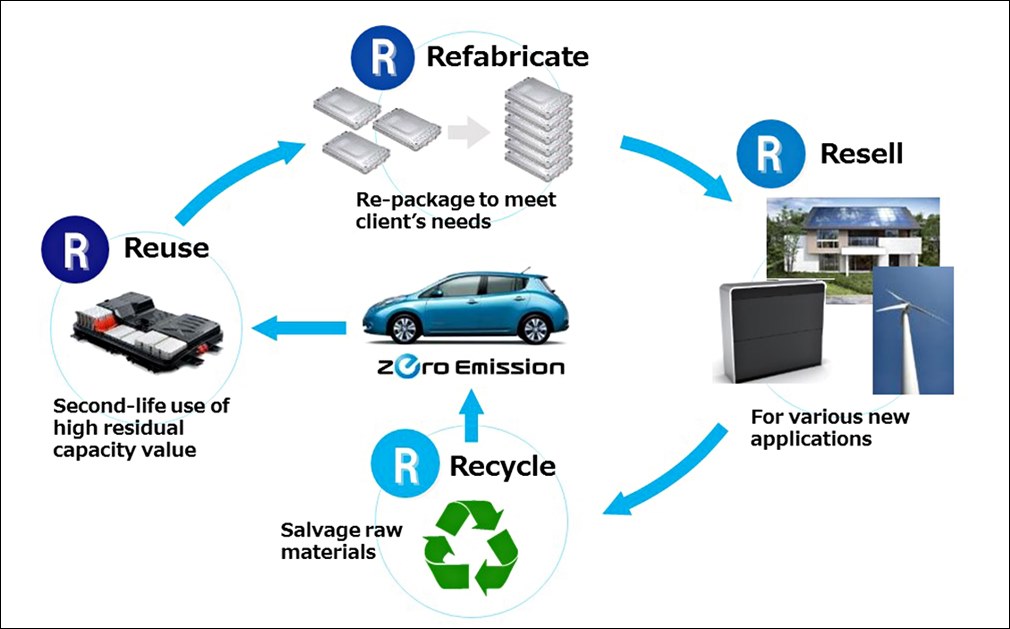
Eventually, it will probably be that entire EVs – including their battery packs – will have a specific lifecycle so a new battery pack is unnecessary. Everything can be recycled and the batteries might even serve a further purpose for other equipment. The latter process already exists in some places through projects initiated by manufacturers.
The true test of success for electric vehicles is therefore to deliver on their broader promise and create a commercially successful automotive industry that can also be environmentally sustainable. The Hexagon survey demonstrates that manufacturers are aware of the need to go beyond eliminating end-user emissions and improve the ‘whole-lifecycle’ sustainability of EVs. Carmakers and suppliers also increasingly recognize the need to think beyond the vehicles and instead build car parts for a second life and a circular economy.
This will require the industry to compress and connect manufacturing processes together so that sustainability is ‘baked in’ to a vehicle’s DNA at design stage and every part is conceived and created to support both a sustainable car and economy.
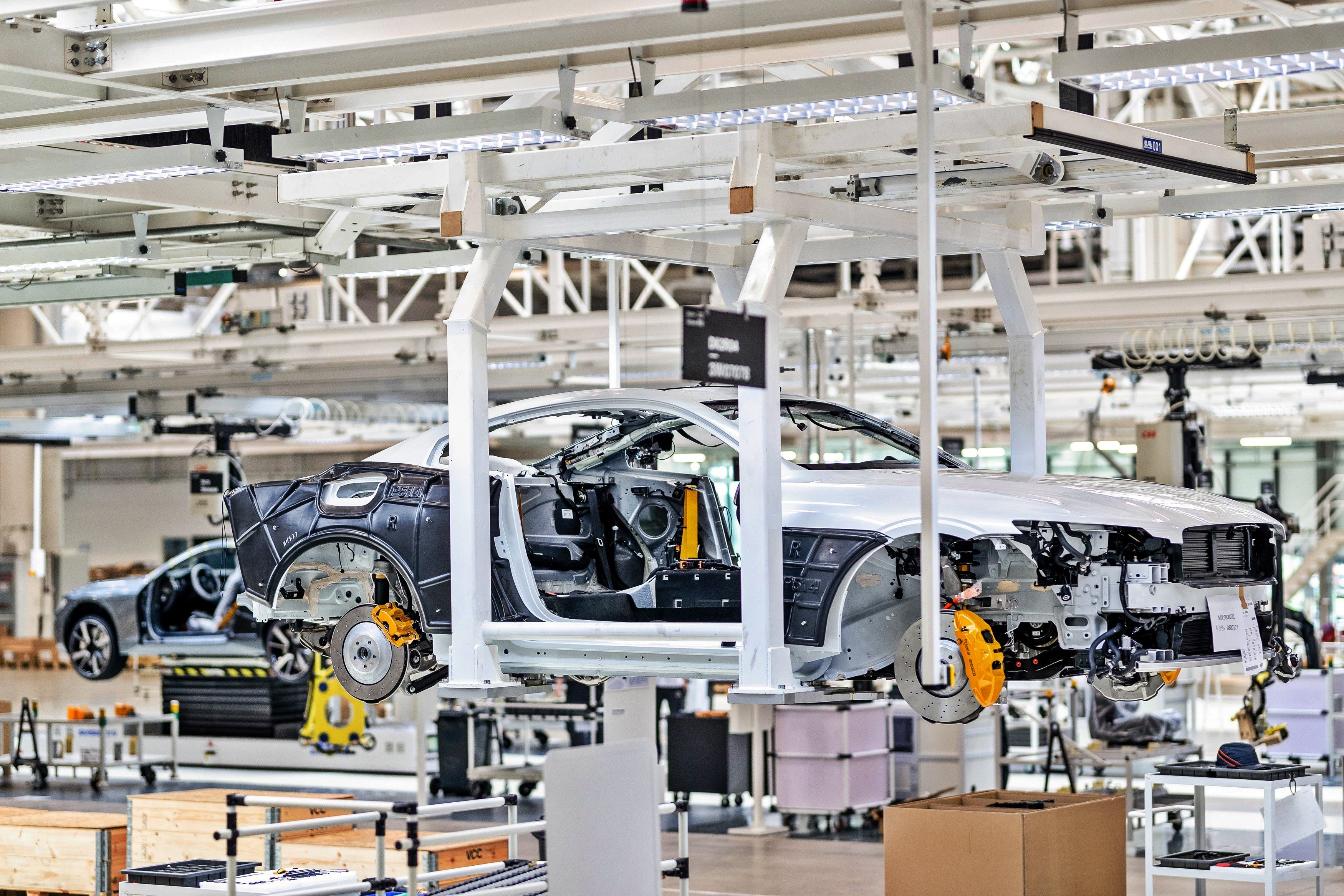
The automotive industry is therefore caught between bottom-up consumer expectations and top-down political pressure for more sustainable EVs. “Living up to the lofty vision of an ethical and environmentally-friendly automotive industry means moving beyond simply eliminating tailpipe emissions to creating lighter, more sustainable materials and manufacturing methods. Emerging smart manufacturing approaches are vital to bring these innovations to market within demanding deadlines, while remaining profitable,” said Paolo Guglielmini, President of Hexagon’s Manufacturing Intelligence division.
So should you buy an EV?
The ‘dark side’ of EVs aside, the change will come about and even if you presently have the choice of staying with an ICE vehicle, your children probably won’t. EVs are the future and ICE vehicles will either be banned from use in some countries or their sale will be stopped so that they eventually diminish in numbers (which could take decades in places like Malaysia). Right now, for Malaysians, it would be a good time to buy an EV if you can afford one because of the duty-exemption. This exemption won’t be around forever although there may be other incentives in future though not as great as this one.
There are definitely advantages to owning and using an EV compared to an ICE vehicle. Running and maintenance costs are less but you will incur an extra initial expenditure setting up a charging point at home (if you can do so). The earlier disincentives like limited range are steadily being erased as battery technology improves and the same goes for recharging facilities. The network is steadily growing and with increasing numbers of EVs on the roads, there will be more justification to invest in expanding the network.
Like computers and mobilephones, the technology keeps advancing each year. As we said earlier, there is a race on by the industry to improve range and reduce costs and so performance will get better and as volumes rise, production costs can go down so EVs will become cheaper. In this case then, perhaps it may be a better idea to consider the subscription approach instead of the outright purchase and ownership model that has been the norm for decades. This will help you to remain current with the latest technologies by changing cars regularly without concerns about depreciation and disposal.
Malaysians understand merits of EVs but misconceptions remain, BMW survey finds
Toyota GAZOO Racing has done a lot of upgrades to the GR Supra since it returned in 2019. But the one thing which fans wanted that this Supra has not come with is a manual transmission. The shared development with BMW made it more convenient to use the same type of transmission – an 8-speed automatic – rather than separately engineer for a manual transmission. Although people may think that it’s a simple matter, everything involves time and cost and there must be a good business case too.
Toyota’s Executive Chief Engineer (involved in the high-performance products) Tetsuya Tada had explained that the automatic transmission for the GR Supra is an ‘excellent transmission’ and it also handles lots of torque well. So that’s helpful when it comes to tuners bumping up the output as they are less likely to destroy the transmission.
But he never ruled out the possibility of having a manual transmission too and now, three years down the road, the GR Supra will soon be available with a manual transmission. An official communication from Toyota Europe says that ‘all-new, tailor-made manual transmission is coming soon’. It ends with a hashtag #savethemanual which is probably a sentiment supported by Tada-san’s boss, the President of Toyota, Akio Toyoda.
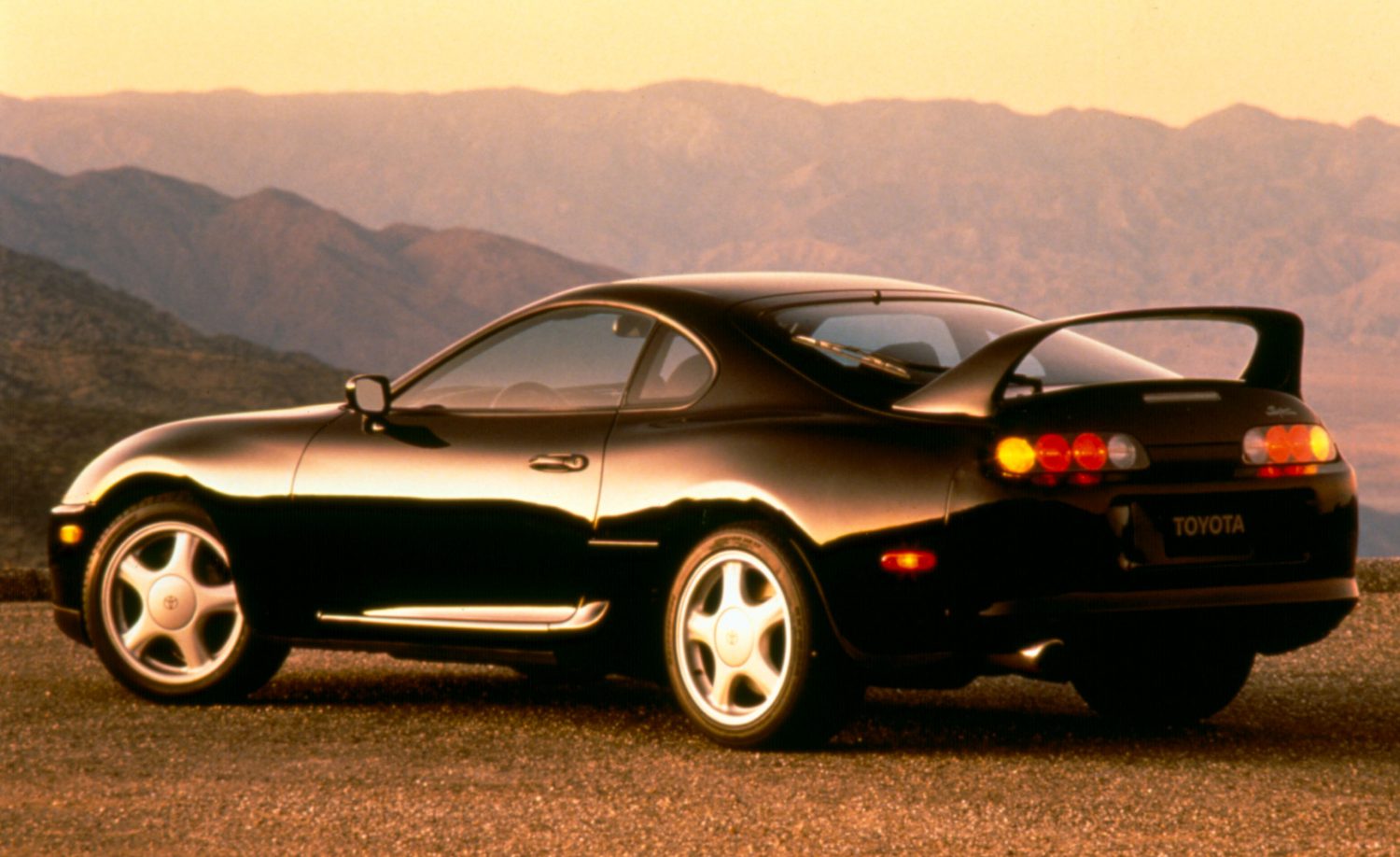
Details of the transmission are not revealed, and the only images shown are the pedals. Toyota Europe also offers pictures of the three pedals in the GR 86 and GR Yaris, with the GR Supra having a throttle pedal that is floor-hinged whereas the other two cars have it top-hinged.
The last generation of the Supra had two types of manual transmissions – a 5-speed Aisin W58 unit and in some markets, a 6-speed V161 (Getrag 233) transmission. The Getrag unit was well known to be a robust unit and praised for its ability to handle very high outputs. If there were transmission failures, it was mainly due to missed shifts.
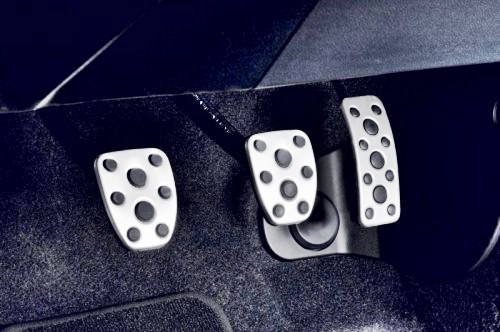
Perhaps Toyota GR will use this proven Getrag gearbox again. From the words ‘all-new’, it is likely that this is an independent development by the Toyota GR team and so they can choose their own hardware. Or it could also be the gearbox from the M3.
The current powertrain line-up has two BMW-sourced turbocharged engines – a 3-litre in-line six and 2-litre in-line four – and it is likely that the bigger, more powerful engine will get the manual shifter. Whether it will be a limited edition or an addition to the line-up is uncertain. Toyota GR has done some limited editions and one more hint about the new variant is that it will be identified by a new red-coloured ‘Supra’ badge.